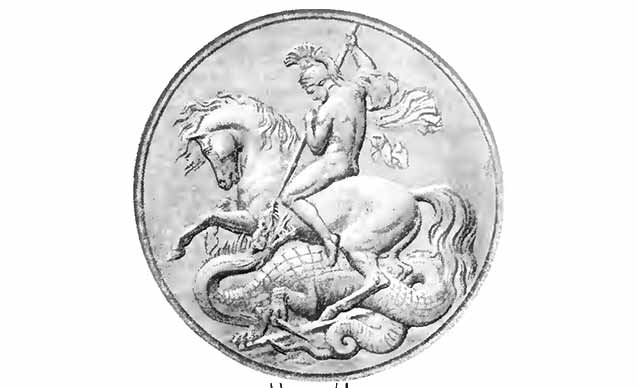<![CDATA[Saint George is traditionally considered the patron saint of England. His legendary victory over the dragon is seen as symbolic of the power of the English people to subdue their powerful enemies. His red cross on a white background is the basis of the British Union Jack flag. In earlier years it was carried into battle as a standard. The image of George the dragon slayer has been used since the 1800s on English gold coins. However, none of the stories connected with this figure describe him as coming from the British Isles. The story reached England in the medieval period – the time of the Crusades. People were attracted to this tale of bravery and chivalry. In the course of time its foreign origins were forgotten and it began to be seen as an English tradition. It is not a coincidence that George has been the second most popular name given to English monarchs. The George and the Dragon story There are several versions of this story. Usually it is set in North Africa. One story recounts how the brave knight arrived in Libya after a very long and arduous trip by land and sea. Here he met a hermit who told him about a terrifying dragon that was terrifying the people of Libya. The dragon had an unpleasant habit of devouring young maidens. The problem the country faced was that all the young maidens had been eaten with the sole exception of the king’s daughter. It was her turn to be the dragon’s lunch tomorrow. The King of Egypt was offering his daughter in marriage to any brave knight willing to rid the land of this dragon. This was exactly the kind of challenge George was searching for. He galloped off the valley where the beast lived just in time to see the princess of Egypt being led to this grisly death. He comforted her with the news that he was off to kill the dragon and she need not fear. True to his words he rode on to the cave where the dragon lived. The huge beast with a fifty foot long tail and a huge head was understandably furious at this intrusion on its territory. It came out of its cave roaring like thunder. George charged at the dragon and speared it but its scales were so thick his spear broke. George was dismounted but found refuge under a magical tree conveniently on hand for some emergencies. The tree’s magical powers shielded him against the dragon’s poison. When he had recovered from the failure of the first attack he went after the dragon again with his sword. The dragon doused him in poison and his armour fell apart. Everything was almost lost but George noticed just in time that there were no scales under the wings of the beast. He struck it under its wings with his sword and at last succeeded in dispatching the monster. Interpretations On the most basic level George and the dragon is an attractive fairy story. We learn about the triumph of good over evil in a manner that leaves no room for alternative interpretations. On a deeper level it is easy to detect in the persona of the dragon a symbolic representation of our fears of the unknown, or situations we perceive as very threatening. The dragon can be seen as almost insurmountable obstacle or approaching terror threatening our very existence. The conquest of the dragon shows that we have the abilities to overcome our most dreaded enemies with sufficient determination and courage. These ideas appeal to individuals. They also clearly held appeal for an island nation fearing invasion from its more powerful Continental neighbours. If you want to connect the dragon slaying with some episode in early history, there is no evidence that Saint George is modelled on a person whom we know lived in a certain historical period. However, it is interesting to note that many cultures have stories featuring dragons. Some scholars suggest that one explanation for this maybe the survival of dinosaurs into a much later period than we used to believe. The theory has always been that dinosaurs died out before man came on the scene. These scholars postulate that early man might have seen dinosaurs and conceivably needed to defend himself against them. If this really was the case there may have been a real prototype for Saint George – an ancient warrior who fought and killed one of these prehistoric monsters. His exploits would have been talked and sung about for generations and so this story may have a germ of truth in its origins. More prosaically the stories of dragons may have been sparked by the discovery of dinosaur skeletons, which would certainly have the power to terrify a superstitious and uneducated farmer. In truth, we will probably never know. ]]>
Saint George Versus the Dragon
